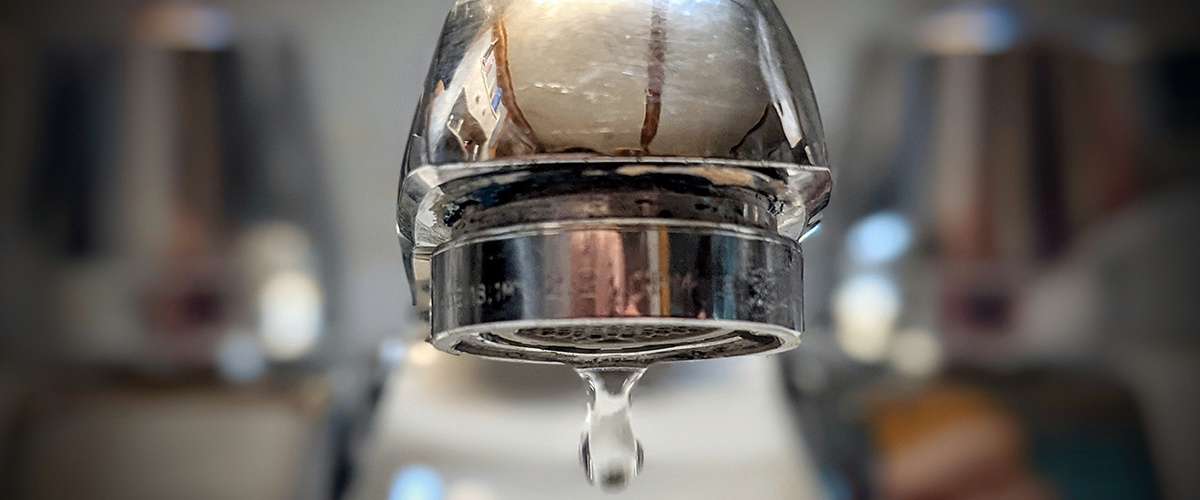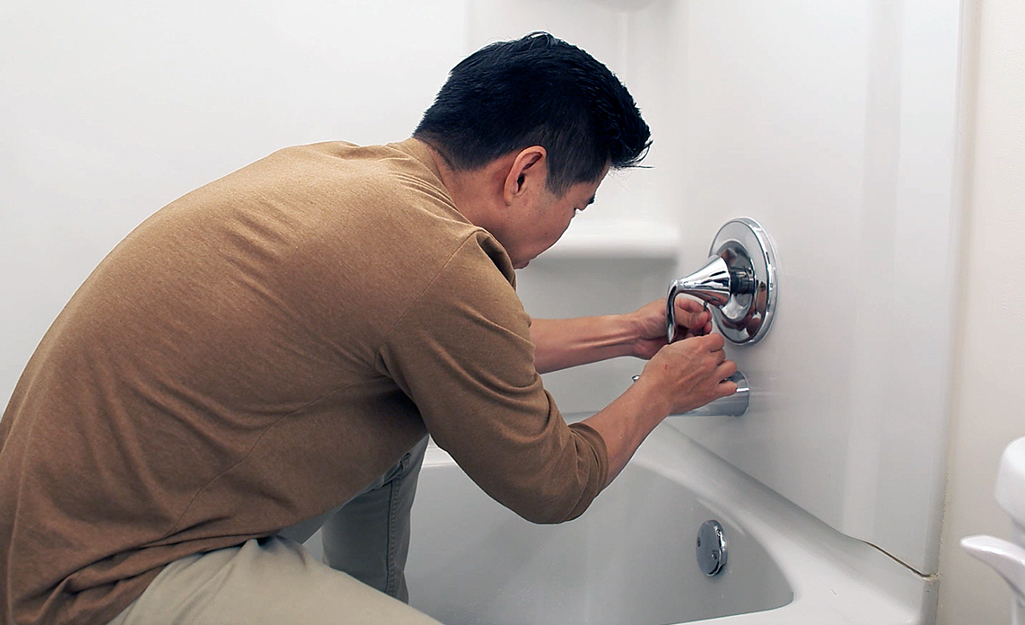How It's Necessary to Correct a Faulty Faucet
How It's Necessary to Correct a Faulty Faucet
Blog Article
The content following next pertaining to What Causes Leaky Faucets & How To Fix Them is indeed compelling. Check it out for yourself and figure out what you think of it.

Leaking taps could feel like a small inconvenience, but their effect exceeds just the nuisance of the noise. From drainage to sustaining unnecessary financial expenses and health and wellness risks, disregarding a leaking tap can cause different repercussions. In this short article, we'll delve into why it's essential to address this typical household concern quickly and efficiently.
Waste of Water
Environmental Influence
Leaking taps add considerably to water wastefulness. According to the Environmental Protection Agency (EPA), a single tap trickling at one drip per second can waste greater than 3,000 gallons of water each year. This not just strains water resources but also affects environments and wildlife dependent on them.
Step-by-Step Guide to Fixing a Dripping Faucet
Devices Called for
Before trying to fix a trickling faucet, collect the essential tools, including an adjustable wrench, screwdrivers, substitute components (such as washing machines or cartridges), and plumber's tape.
Typical Faucet Issues and Their Solutions
Recognize the sort of tap and the specific issue causing the drip. Typical troubles include worn-out washers, corroded valve seats, or defective O-rings. Refer to producer instructions or on the internet tutorials for step-by-step guidance on repairs.
Financial Costs
Increased Water Bills
Beyond the ecological influence, leaking faucets can inflate water costs substantially. The gathered wastefulness gradually translates right into greater utility expenditures, which might have been avoided with prompt repair services.
Prospective Building Damage
Moreover, long term leaking can cause damage to components and surfaces bordering the tap. Water build-up can create staining, deterioration, and also structural problems if left unattended, leading to added repair expenses.
Wellness Concerns
Mold and Mold Growth
The constant existence of dampness from a trickling faucet creates a suitable atmosphere for mold and mildew and mold development. These fungi not only compromise indoor air high quality yet additionally posture health risks, particularly for individuals with respiratory problems or allergic reactions.
Waterborne Conditions
Stationary water in trickling taps can come to be a breeding place for microorganisms and other pathogens, increasing the threat of waterborne diseases. Impurities such as Legionella germs flourish in stagnant water, potentially resulting in major illnesses when consumed or inhaled.
DIY vs. Specialist Repair service
Advantages and disadvantages of DIY Fixing
While some might attempt to take care of a dripping faucet themselves, do it yourself repair work feature their own collection of obstacles. Without correct understanding and devices, DIY attempts can aggravate the problem or bring about insufficient fixings, extending the trouble.
Benefits of Working With an Expert Plumber
Working with a professional plumber makes sure that the underlying source of the dripping faucet is attended to properly. Plumbings possess the expertise and equipment to diagnose and repair faucet problems effectively, saving time and lessening the danger of further damage.
Environmental Responsibility
Individual Payment to Preservation
Taking duty for dealing with trickling taps straightens with wider initiatives toward water conservation and ecological sustainability. Every person's actions collectively make a substantial effect on preserving priceless resources.
Sustainable Living Practices
By focusing on timely repairs and adopting water-saving behaviors, individuals add to lasting living methods that profit both existing and future generations.
Preventive Measures
Routine Maintenance Tips
To avoid dripping taps, carry out routine maintenance such as cleansing aerators, examining for leakages, and replacing damaged parts immediately. In addition, think about mounting water-saving devices or upgrading to a lot more reliable components.
Significance of Prompt Fixes
Resolving dripping faucets as soon as they're observed avoids further water wastefulness and prospective damages, inevitably conserving both water and cash in the long run.
Impact on Residential Property Worth
Assumption of Well-Maintained Building
Keeping a residential or commercial property in good condition, including addressing maintenance concerns like trickling faucets, enhances its regarded worth and charm among potential customers or occupants.
Influence on Resale Worth
Residences with properly maintained plumbing fixtures, including taps, command greater resale worths in the property market. Dealing with trickling taps can add to a positive perception throughout building evaluations and arrangements.
Final thought
Resolving a leaking tap goes beyond simple ease; it's a necessary action toward saving water, lowering financial prices, and protecting health and wellness and property. Whether through DIY repair services or specialist assistance, taking action to repair leaking taps is a tiny yet impactful means to advertise liable stewardship of sources and add to a much healthier, extra lasting future.
How to Fix a Dripping or Leaky Faucet
A leaking faucet is one of the most common problems that homeowners encounter, but it being commonplace doesn’t make it any less annoying. The constant drip drip drip of a leaking bathtub faucet, showerhead, or sink tap can disturb your home’s serenity. Left neglected, a dripping faucet can also result in higher water bills and discoloration or mold growth in your sink or plumbing fixtures.
Fortunately, you don’t have to be a trained plumber to know how to stop a dripping faucet. With some basic tools, replacement parts, and a little patience, leaky faucet repair is a breeze. In this article, we’ll explain what causes dripping faucets and how you can fix them.
What Causes a Leaking Faucet?
Kitchen and bathroom faucets come in all manner of designs, but most involve some combination of valves, O-rings, seals, and washers. The O-ring is usually the weakest link, but any one of these pieces can wear down over time. Heat, moisture, temperature fluctuations, minerals, mold, and movement can contribute to warping and corrosion, breaking the watertight seal. This just comes with the territory of being a homeowner. Everything is always subject to wear and tear, and some component parts of your appliances and fixtures need to be replaced on occasion. At least replacement O-rings are cheap!
More rarely, dripping faucets can be a symptom of excessively high water pressure. Were this the case in your home, you would probably notice that the leak is not isolated to one faucet. Water pressure issues are harder to resolve on your own. We recommend contacting a professional plumber if you suspect your water pressure is too high.
How to Fix a Dripping Faucet
Pipe wrench or monkey wrench Allen wrench set Screwdrivers Old towel or rag Shut off the water.
Before you do anything, you need to turn off the water to keep from drenching your kitchen or bathroom. You should find a valve under the sink and against the wall. Once you’ve turned this valve, try turning the faucet on to confirm that the water source has been cut off.
If you can’t locate your local valve for the faucet you’re working on, you can always shut off the water to the house at the main valve. Of course, this will prohibit anyone from using the sinks, showers, or toilets while you’re working on the faucet that’s giving you trouble.
Plug or block the drain.
You’ll be disassembling the faucet and removing some small bits of hardware. Plug the drain with a stopper or rag to avoid the possibility of a small screw falling into your P-trap.
Take apart the faucet assembly.
There are several varieties of kitchen and bathroom faucets, each with its own manner of assembly. For detailed instructions on how to disassemble your faucet, you can refer to the fixture’s manual or contact the manufacturer. If you know whether you have a ball, disc, cartridge, or compression faucet, you can find detailed schematics online.
In general, you need to begin by removing the faucet handles. You might notice a small screw that you’ll need to remove with a screwdriver or Allen wrench. If you don’t see any visible securing hardware, it’s likely hidden under a decorative cap that can be unscrewed or popped off with flathead screwdriver.
Remove each piece methodically, consulting a schematic when necessary. Take notes or arrange the pieces in such a way to make it easier to correctly reassemble the faucet later.
Remove the cartridge.
Once you’ve removed the handles and securing hardware, you should be able to remove the valve cartridge or stem. Some cartridges will slide right out. Other faucet models will require you to loosen a nut with a pipe wrench before you can remove the valve stem.
Examine the exposed hardware.
With the cartridge or stem removed, inspect the component parts. Check the rubber O-rings for wear and tear. Also examine the seat washer for corrosion or other damage. These pieces are usually the responsible parties for a dripping faucet, but it’s worth inspecting the other component parts while you have the faucet disassembled.
Find replacement parts.
Once you’ve identified which faucet component has failed, find an identical replacement. Your local hardware store should have O-rings, seat washers, and other standard components in stock. If you have a luxury or uncommon faucet, you may have to contact the manufacturer for a replacement part.
It’s a good idea to take your old parts with you to the hardware store so you can compare them with the store’s inventory and be sure you’re purchasing the correct replacement.
Reassemble the faucet.
With your new parts in hand, reconstruct the faucet and handles. Don’t be tempted to overtighten screws or nuts. You might think this could create a better seal, but it can instead damage or bend a delicate part of the assembly and create a new problem for you.
Turn on the water and test the faucet.
The only thing left to do is test your work. Unplug the sink, turn the water back on, and try the faucet. Congratulate yourself on a job well done!
https://www.libertyhomeguard.com/how-to-fix-a-dripping-or-leaky-faucet/

As a person who reads about Why Is It Important To Fix Your Leaking Tap/Faucet?, I figured sharing that piece of content was a good idea. Sharing is good. You won't know, you may be helping someone out. Kudos for being here. Don't forget to check up our blog back soon.
Report this page